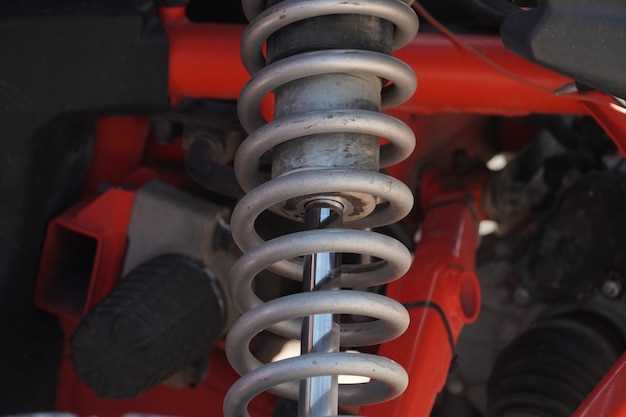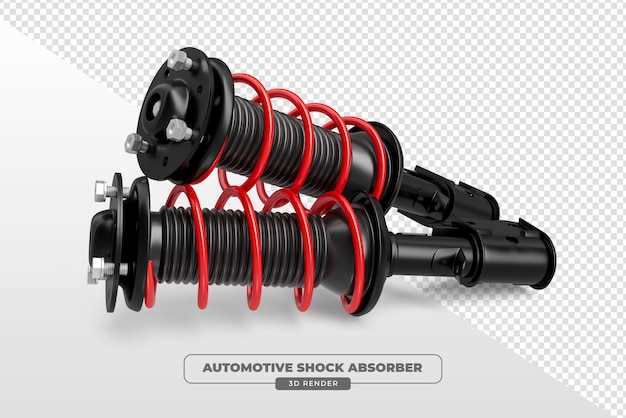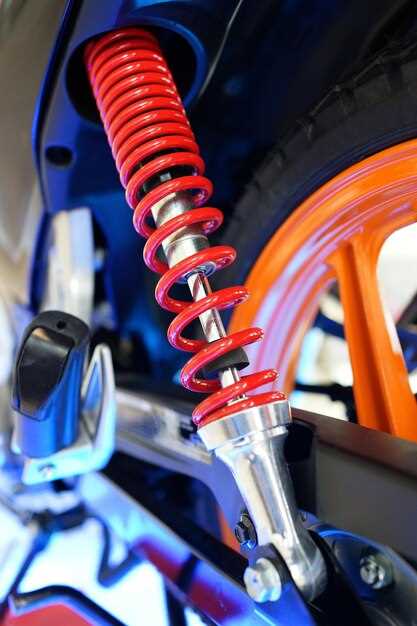
When it comes to enhancing vehicle performance, suspension systems play a pivotal role. For racing enthusiasts and performance drivers alike, the choice of a kit can significantly influence handling, stability, and overall driving experience. As the demands of competitive environments increase, automakers and after-market producers have risen to the occasion, offering a range of suspension kits tailored specifically for racing applications.
Investing in a race suspension kit is not merely about aesthetics; it’s about engineering precision and performance enhancement. These kits often incorporate advanced materials and technologies designed to withstand the rigors of race conditions while providing superior control. However, the question remains: are they worth the financial commitment?
Understanding the benefits and potential drawbacks of a race suspension kit is essential for any driver aiming to elevate their vehicle’s capabilities. This article will explore the factors that can help you determine whether such an investment aligns with your racing goals and driving style.
Race Suspension Kits: Are They a Smart Investment?
Race suspension kits are essential components for performance-driven vehicles, specifically designed to enhance handling and stability during racing. Upgrading to a race suspension can dramatically affect a car’s behavior on the track, allowing for quicker lap times and improved cornering capabilities.
One of the primary benefits of installing a race suspension kit is the increased adjustability it offers. Many kits come with features such as adjustable ride height, dampening settings, and camber adjustments. This customization enables drivers to fine-tune their suspension setup to match specific track conditions and personal driving styles, making it a valuable investment for serious racers.
Performance Enhancement is another critical aspect. A properly calibrated suspension improves weight transfer, enhances grip, and provides better traction, which translates to faster acceleration out of corners. When all elements work harmoniously, the driver’s confidence also increases, leading to improved race performance.
Moreover, long-term cost efficiency can arise from this investment. While the initial expense may seem high, better suspension can lead to reduced wear on tires and braking systems, ultimately saving money on replacements and maintenance over time. Additionally, a competitive edge gained from superior handling can justify the upfront cost through potential winnings in races.
However, it’s essential to consider the context of your racing needs. For casual racers or those participating in enthusiast events, a race suspension kit may offer diminishing returns compared to their price. Understanding your goals and the frequency of use is crucial in making an informed decision.
In conclusion, if you are serious about improving your vehicle’s performance in racing conditions, investing in a race suspension kit can be a smart choice. Focused on enhancing handling, stability, and overall driving experience, these kits can provide significant benefits that overshadow their costs, particularly for dedicated racers.
Understanding the Performance Benefits of Suspension Kits

Upgrading your vehicle’s suspension with a high-quality suspension kit can significantly enhance its overall performance. One of the primary benefits of these kits is improved handling. By reducing body roll and enhancing grip during turns, a suspension kit enables drivers to navigate corners with greater confidence and stability.
Another key advantage is increased ride quality. A well-engineered suspension kit can absorb bumps and road imperfections more effectively, resulting in a smoother driving experience. This can make long journeys more comfortable and enjoyable.
Suspension kits also contribute to better tire performance. With improved alignment and contact with the road, they can prolong tire life and ensure more even wear. This means that not only will you enjoy enhanced handling, but you will also save money on tire replacements over time.
Furthermore, performance suspension kits often come with adjustable components, allowing drivers to tailor the setup to their specific driving needs. This adjustability means that whether you’re heading to a track day or just driving on the street, you can optimize your vehicle’s performance according to the scenario.
In addition, a well-balanced suspension system can lead to more consistent braking performance. As a vehicle’s suspension improves its weight distribution during emergency maneuvers, it enhances the overall safety of the vehicle, making it a smart investment for conscientious drivers.
In summary, the performance benefits of suspension kits extend beyond mere aesthetics. They provide tangible improvements in handling, ride quality, tire longevity, adjustability, and safety. Investing in a quality suspension kit can transform your driving experience for the better.
Cost-Benefit Analysis: Racing Suspension Kits vs. Stock Options

When considering whether to invest in racing suspension kits over stock options, it is crucial to evaluate the costs and the potential benefits. Here are key aspects to consider:
- Performance Enhancements:
- Racing suspension kits provide improved handling and stability compared to stock options.
- These kits often include adjustable settings, allowing customization based on driving style and conditions.
- Durability and Quality:
- High-performance kits are usually made from superior materials, ensuring longevity under extreme conditions.
- Stock suspension may wear out faster, especially in racing environments, leading to additional costs over time.
- Installation Costs:
- Racing kits may require professional installation, which can add to the initial investment.
- Stock systems might be easier or cheaper to install, but they won’t offer the same level of performance.
- Resale Value:
- Customizing with racing kits can increase the resale value of a car, appealing to enthusiasts looking for performance upgrades.
- Conversely, stock options could lead to decreased interest from buyers seeking high-performance vehicles.
In summary, the decision to invest in racing suspension kits or stick with stock options hinges on the balance of immediate costs against long-term benefits. Enthusiasts may find that the superior performance and durability of racing kits justify the initial expenditure, while casual drivers might opt for stock options for their cost-effectiveness. A thorough analysis of personal driving needs and goals is essential in making the right choice.
Installation and Maintenance: What to Expect with Race Suspension Kits
Installing a race suspension kit is a crucial step in enhancing a vehicle’s performance on the track. The installation process typically requires significant mechanical knowledge and the right tools. Most kits come with detailed instructions, but it is advisable to have the installation performed by a professional for optimal results. This ensures that components such as springs, dampers, and sway bars are properly aligned and calibrated. During installation, attention must be paid to the existing suspension setup, as upgrading may require modifications to other parts of the vehicle to maintain balance and control.
Once installed, regular maintenance of race suspension kits is essential for ensuring maximum performance and longevity. Unlike standard suspension systems, race setups may demand more frequent checks due to their high-performance nature. Key areas to focus on include the inspection of bushings, joints, and dampers. Keeping these components lubricated and free from debris will help prevent wear and maintain the handling characteristics of the vehicle. Additionally, periodic realignment is necessary to guarantee that the suspension geometry remains within the desired specifications, especially after any significant impacts during racing.
Furthermore, it is important to monitor the condition of the springs and shocks regularly. These components can experience fatigue due to the increased stresses of racing conditions. Signs of wear, such as leaking fluid or uneven wear on tires, can indicate that the suspension setup requires attention. By staying proactive with maintenance, racers can ensure that their suspension system performs at its peak, providing both safety and competitive advantage on the track.
